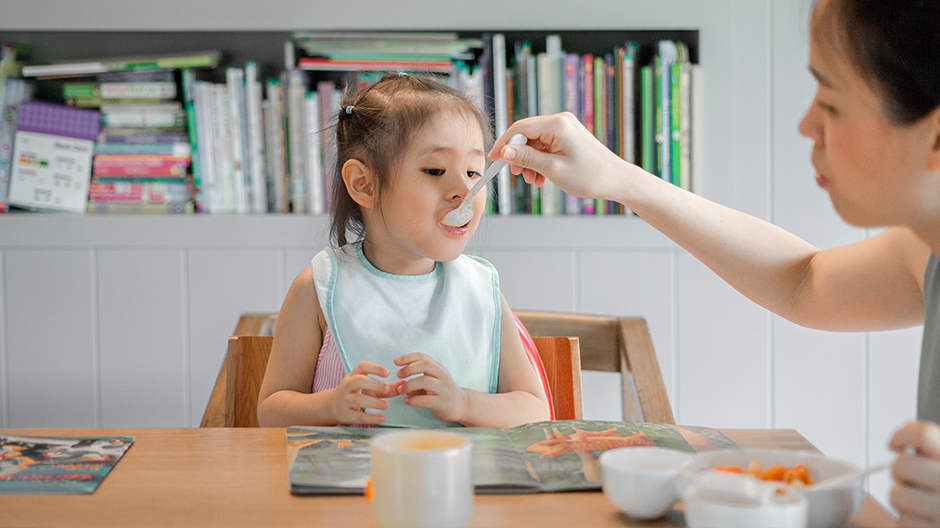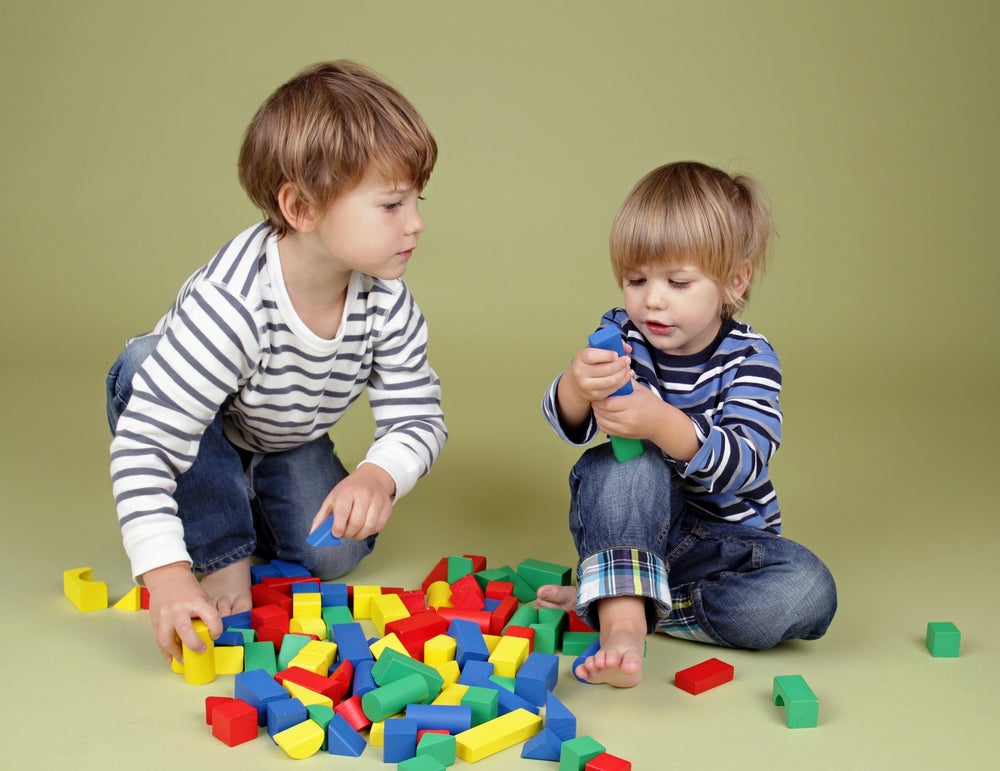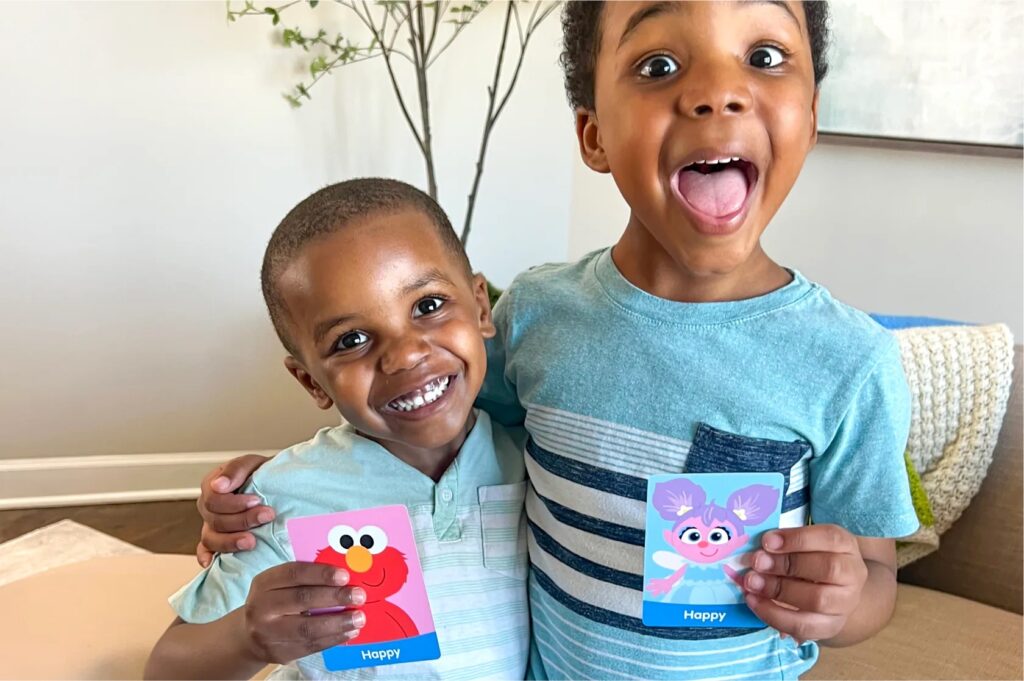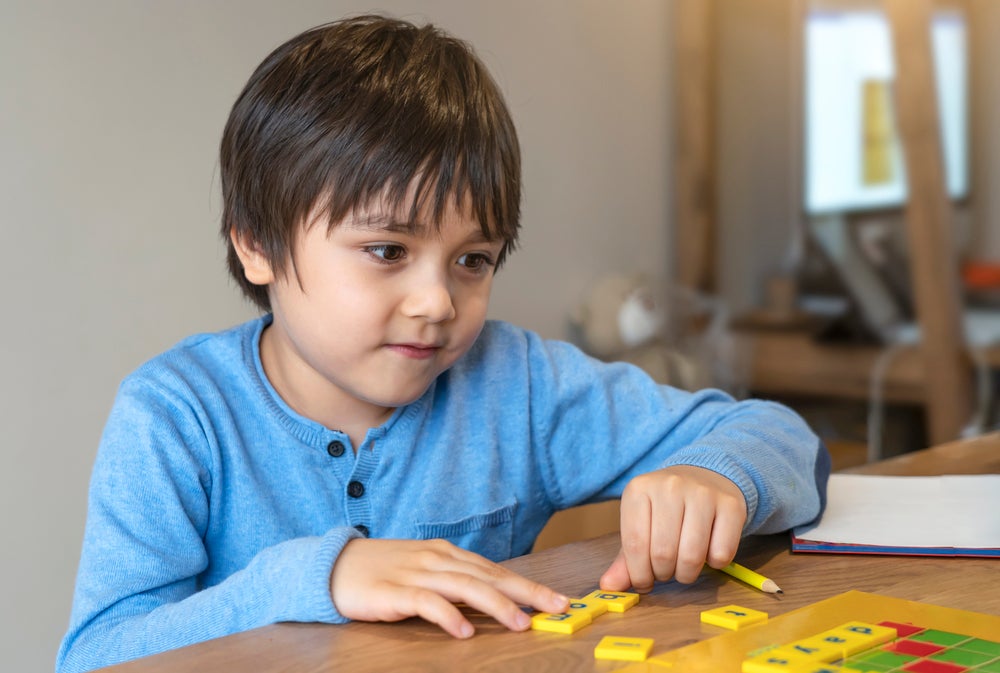Getting toddlers to eat at mealtime can be difficult. Developmentally, they’re learning to assert themselves, which means saying “no” a lot—including to food! Sometimes they refuse to eat a dish they usually love. Sometimes they won’t eat dinner but want snacks. And sometimes a toddler flat out won’t eat at all.
Dealing with picky toddlers can be frustrating for parents, but it’s not all bad. It’s a hidden opportunity to help your kids build Character, one of the 5 C’s at the heart of the Begin Approach to helping them thrive in school and life.
Curious how? Read on to find out, along with 10 tips for getting even the pickiest toddlers to eat.
The Short Cut
- Toddlers are learning how to be assertive, an important Character skill that often means saying “no” to adults, including at mealtimes
- Focusing on other age-appropriate Character skills like following simple rules (eating healthy food before snacks or dessert) and navigating conflict (no yelling) can ease mealtime stress
- Involving kids in mealtime (picking foods, helping cook, setting the table) and role-playing food preparation may get them more excited to eat
- Focus on progress over perfection. Toddlers rarely eat every food on their plate, and it can take a long time for their habits to change—but they’ll get there!
What to Do When Your Toddler Won’t Eat
1. Set The Mood
If your toddler starts connecting mealtimes with negative emotions, they’re less likely to want to eat. Instead, they’ll be mentally preparing for the argument that’s about to begin.
To reduce meal-related stress, try to make eating a relaxing experience. As a family, create some basic rules for dinner time. You might decide that there’s no yelling allowed or that everyone stays in their seat until the whole family is done eating.
Then, try to make your table an inviting place. Set out placemats or fun place cards. Ask your child to help with this. They can also set out a simple centerpiece, like a vase of flowers or a bowl of fruit.
Once you’ve prepared the table and gathered everyone together, focus on relationship-building strategies instead of what people are eating.
For example, take turns sharing about your day. You can ask everyone to share one good thing that happened. This keeps a positive atmosphere in the room.
It might take some time for your child to learn to relax again at the table, so be patient. And no matter how long it takes for them to eat, stick to the rules you created. Otherwise, you risk recreating the battlefield.
2. Read Books about Food
Take conversations about food outside of the kitchen by reading books about food together. The right book can help open a child up to the idea of trying new foods, or provide context for your discussions about eating.
Here are a few you can enjoy:
- The Very Hungry Caterpillar by Eric Carle
- How to Eat Pizza by John Burgerman
- Monsters Don’t Eat Broccoli by Barbara Jean Hicks
- D.W. the Picky Eater by Marc Brown
- Vanilla Bean: A Story About Trying New Things by Katie Turner
As you read, use the stories and illustrations to encourage your child to talk. Have them point to different types of food on the page. Ask them to show you which food in the book is their favorite and which ones they don’t like.
These types of questions help you understand your child’s perspective and give you insight into their attitudes about a variety of foods. This information can help you work through the picky eating phase.
3. Let Your Child Choose and Help
If your child gets to pick what’s for dinner, they’ll be more willing to eat it. Give them a chance to choose their favorite meal. Or, let them select some side dishes to go along with the main dish you’re making.
Once they’ve made their selection, build anticipation before the meal. Tell them you’re excited to eat the food they picked and that you’re looking forward to dinner time together.
When it’s time to prepare the meal, let your child help. Give them age-appropriate tasks to do, such as:
- Stirring ingredients
- Spreading butter on bread
- Pouring a measuring cup
- Scooping ingredients
- Peeling mandarins (once you get them started)
- Using a butter knife to cut bananas
As they help you in the kitchen (a great opportunity for hands-on learning), encourage them to use their senses. Let them smell the vanilla extract. Give them a bit of bread dough to feel and shape. Have them taste the different spices.
These experiences help create positive associations with food, and a sense of pride in helping contribute to the family meal.
4. Limit Snacks
Are you filling your toddler up with snacks throughout the day? If they eat too much between meals, they might not be hungry for dinner. Try limiting them to one snack to see if it helps, or cut snacks out altogether.
It’s also important to make sure any snacks you give your toddler pack a nutritional punch. Offer healthy foods—such as fruits, vegetables, cheese sticks, or whole-grain crackers—instead of heavily processed foods.
Drinks can also be a problem. Certain liquids, like milk and soda, tend to fill a child’s belly more than others. When they’re thirsty outside of mealtime, try giving them a glass of water instead, and limit how much they drink during meals as well.
Your child might complain about these changes at first. They’ve gotten used to the way things are. But they’ll adjust with time, and if it helps them eat better, it’s worth changing.
5. Remember Every Child Is Different
No two kids are alike. Even siblings can have vastly different tastes. Take your child’s habits and preferences into account before you start switching things up.
For example, if your toddler won’t eat when they first wake up, don’t make them sit down for breakfast right away. Instead, let them color, look at some books, or play on a kid-safe app like HOMER or Learn with Sesame Street. Then, have breakfast a bit later.
It’s also important to remember that our sense of taste is coded in our genes, and our taste buds send signals to our brains to create our sense of flavor. This means our likes and dislikes can vary widely, and some children may have “pickier” taste buds.
Embrace each child where they are and work from there. Think about what foods they do eat, and try to serve at least one thing your child enjoys at each meal.
6. Hide Healthy Foods
Hiding healthy foods in foods that your child enjoys is a great way to make sure they’re getting the nutrients they need.
For example, if macaroni and cheese is a favorite, add a bit of cauliflower puree into the cheese the next time you make it. Or make your own ranch dip for veggies using yogurt and spices rather than relying on the store-bought stuff.
7. Check Their Mouth
Picky eating isn’t always the diagnosis when your toddler won’t eat. If their appetite changes suddenly, it’s important to look for other potential causes.
Look in their mouth. Are they cutting any molars? Are there any sores that might make eating painful?
If there are, don’t fret about the food issues. Instead, focus on getting their mouth healed. Once they’re no longer in pain, your child should get back to eating better.
8. Try Drinks If Your Toddler Won’t Eat
Not eating and dehydration can go hand in hand. If your child refuses to eat, make sure they’re getting enough fluids. Offer water throughout the day, and praise your child for finishing their cup or water bottle.
You can also try experimenting with healthy smoothies and shakes. Some toddlers who won’t eat vegetables will happily down an entire green smoothie. It’s a good way to get some extra nutrients into their body.
As you’re working with your picky eater, keep an eye on their overall intake and output. If you notice a sudden reduction in wet diapers or trips to the bathroom, it could be a sign that they need to drink more.
9. Role-Play Mealtime
Kids learn best through play, and role-play is a great way to build Character skills like taking someone else’s perspective. You can help them explore nutrition and food prep while understanding what goes into a meal by playing kitchen with them!
Set up a toy kitchen or turn a cardboard box into a pretend stove. Then, let your child cook for you. Pretend to eat the food they serve and remember to say “thank you.” You could also pretend you’re in a restaurant and let your toddler take your order and bring your food.
While you’re playing, talk about how each type of food makes you feel and share which ones are your favorite. This type of pretend play can encourage your child to have fun and try new foods—and it can get them more comfortable talking about their feelings and model the behavior you want them to show at the table.
10. Don’t Give Up
Children (and adults alike) tend to love sweet and salty things because our brains associate them with having sufficient nutrition for energy output. And most of us don’t like bitter foods because toxins usually have a bitter taste.
While we certainly want our children to eat healthily and get the nutrition they need, don’t get frustrated if things aren’t going as planned. It can take up to 10 times trying a particular food before your child takes to it.
This is normal! Just keep offering healthy foods and sticking to your rules about snacks and treats.
When to Call the Doctor If Your Toddler Won’t Eat

Sometimes, no matter what you try, your toddler still won’t eat. And while it’s normal for kids to be a bit picky, there’s a difference between a slightly picky eater and a toddler who won’t eat anything but a few select foods.
If you believe your child’s eating habits could lead to a medical issue or you’re concerned about their development, talk to their pediatrician.
Most of the time, picky eaters grow into better eating habits. But other kids need help. If your child’s doctor thinks it’s necessary, they might refer you to a feeding specialist for further evaluation or therapy.
Enjoying Mealtime Again

It’s stressful when your toddler won’t eat. Take it slowly and try one new strategy at a time. Soon, you’ll be enjoying meals together, and when that happens, you’ll be glad you stuck with it.
In the meantime, mealtimes (especially dinner for a toddler dropping naps!) can bring up a lot of big feelings. Giving kids a chance to work on social-emotional learning, even for a short time every day, can make those difficult moments easier.
Begin’s Learn with Sesame Street app helps kids do just that. With the help of their Sesame Street friends, kids learn how to express their emotions, empathize with others, and create healthy relationships. The vocabulary and skills they build around feelings will help at the table—and all day long!












